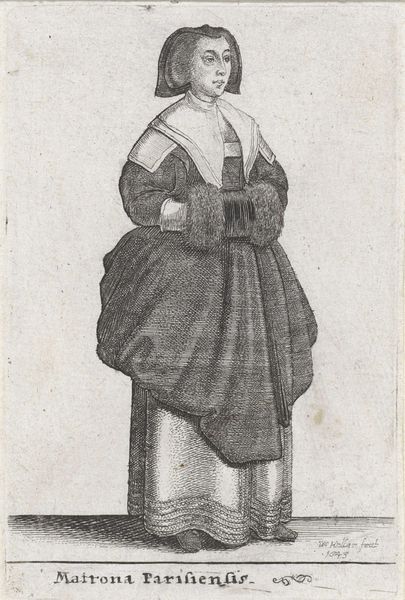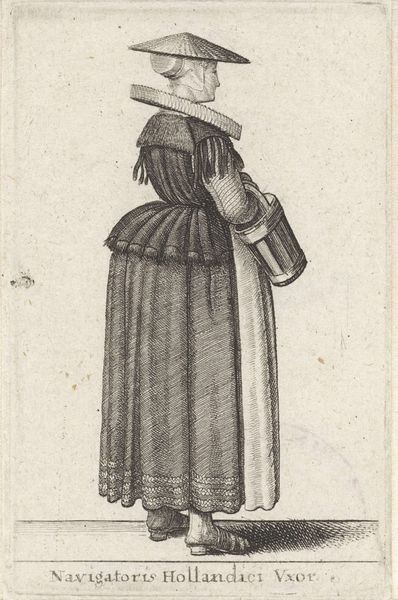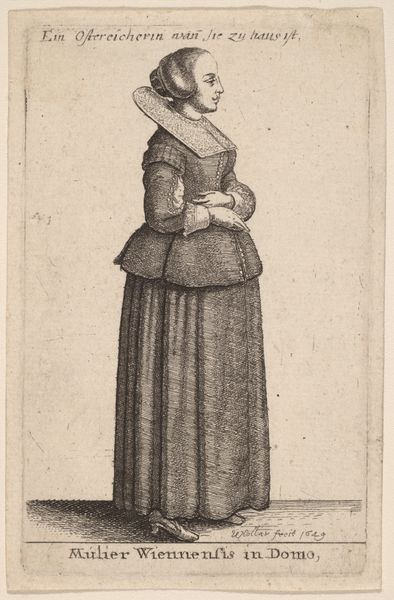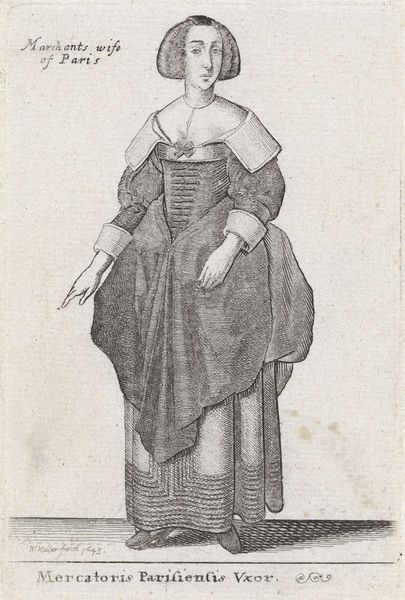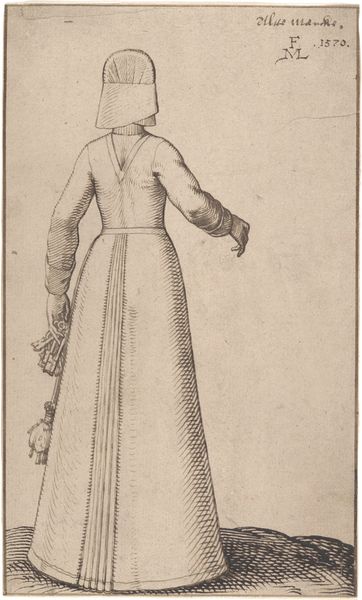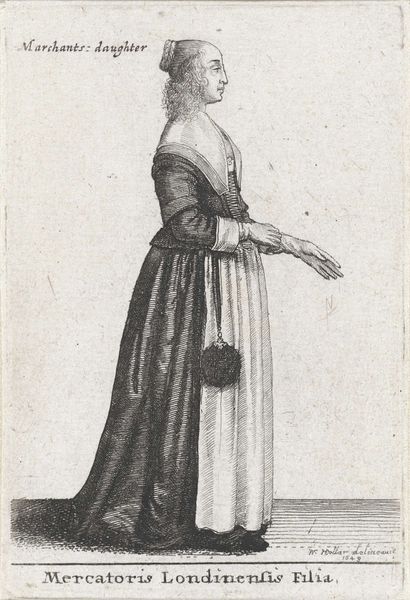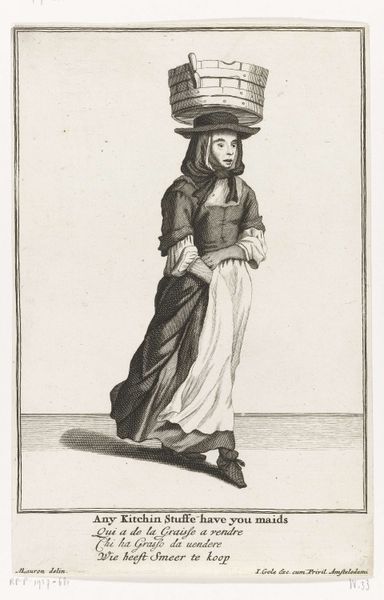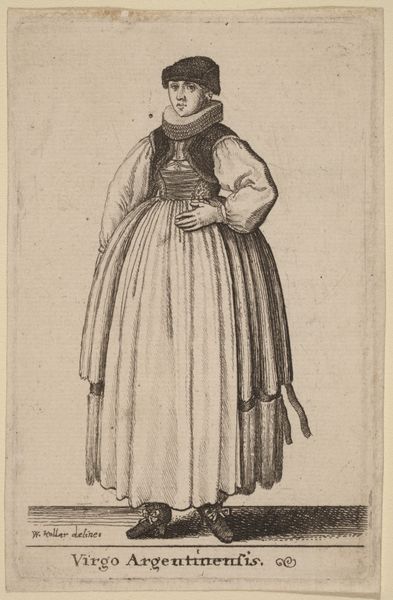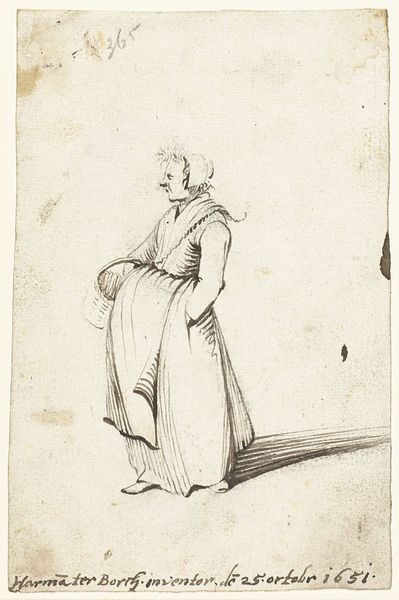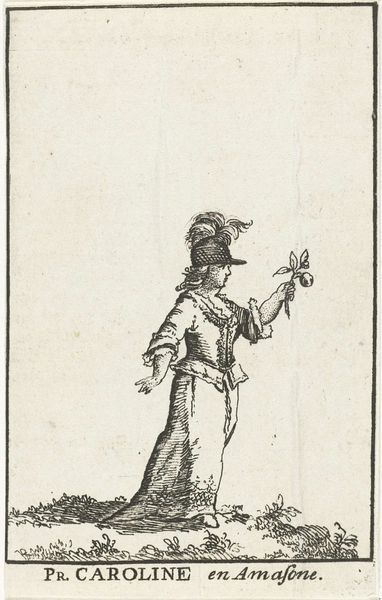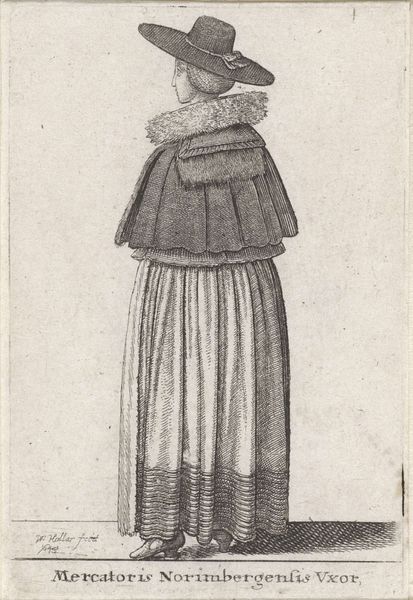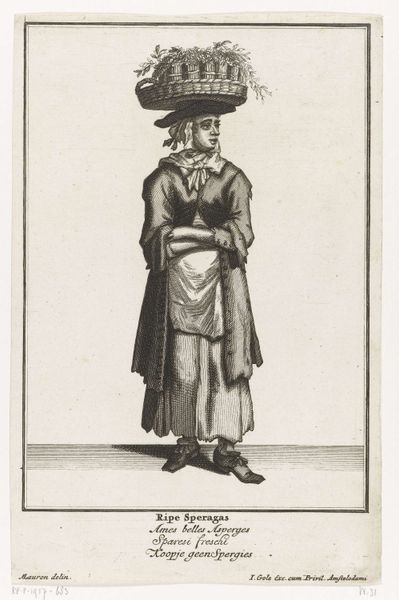
Noord-Hollandse vrouw staand met een ornament of tas in de hand 1652
0:00
0:00
watercolor
#
portrait
#
dutch-golden-age
#
watercolor
#
coloured pencil
#
genre-painting
Dimensions: height 105 mm, width 81 mm
Copyright: Rijks Museum: Open Domain
Curator: This is a watercolor by Gesina ter Borch, titled "Noord-Hollandse vrouw staand met een ornament of tas in de hand," created in 1652. Editor: There's something quietly powerful about this woman's presence. The somber palette, mostly greys and blacks, focuses my attention on her stance and the objects she holds. Curator: Ter Borch was exceptionally skilled at capturing the nuances of daily life during the Dutch Golden Age. Paintings such as this offer invaluable insights into the social customs of the era, and in this one we can see specifically the regional costume and, perhaps, hints at social class through the objects she carries. Editor: I am intrigued by the implied narrative and what she holds; are these beads a token of devotion or does the tas imply an income or commerce she partakes in that could define her own personhood apart from that of daughter or wife? Curator: It’s quite telling, that you point this out because the Dutch Golden Age provided burgeoning spaces where, through trading and burgeoning market economies, the patriarchy that defined European women were becoming less absolute, thus informing broader shifts that emphasized women in various emerging social spaces, despite institutional obstacles. The inclusion of such objects is no coincidence. Editor: What do you make of her expression and pose, considering her probable place in society? Her expression seems unreadable, her eyes concealed. The way she holds what looks like prayer beads gives me a feeling that is somehow both melancholy and grounded. It is a subtle but clear assertion of personal identity. Curator: Exactly. Gesina masterfully plays with visibility and erasure, reflecting on the ambiguous role of women, not simply in Dutch society, but also across intersecting socioeconomic levels, as many would seek to both subvert and abide by contemporary conventions. Ter Borch positions women’s identity within a more complicated web of social codes. Editor: Viewing Ter Borch's portrayal through a feminist lens enriches our interpretation of 17th-century Dutch genre paintings. By focusing on everyday subjects like this Noord-Holland woman, we get an important look at previously underexamined aspects of lived realities. Curator: Precisely. In viewing her portrait and reading against its historic grains of Dutch customs, we start to glean a potent portrait of the tensions held by individuals in transitional eras and the quiet resilience found in quotidian existence.
Comments
No comments
Be the first to comment and join the conversation on the ultimate creative platform.
